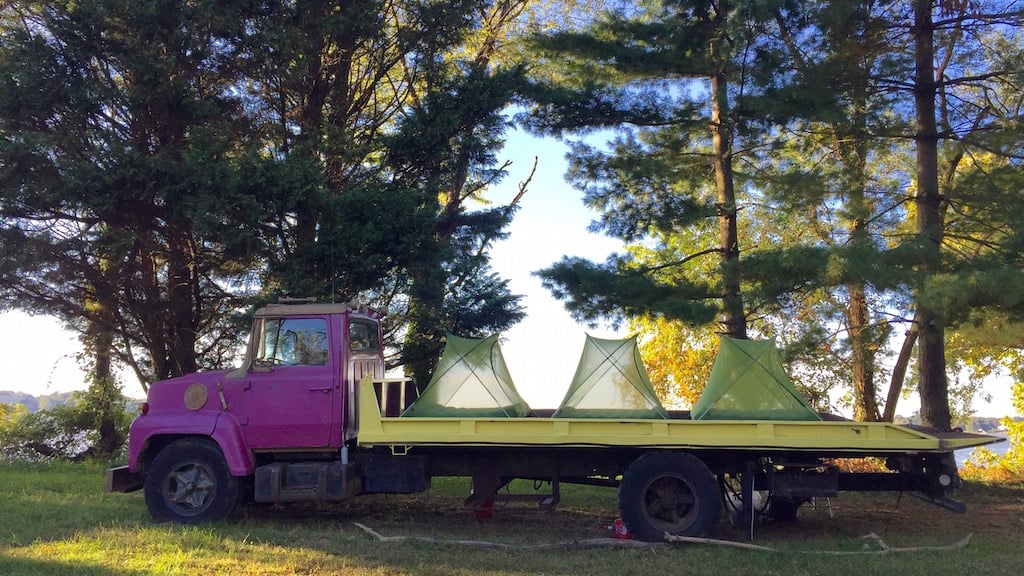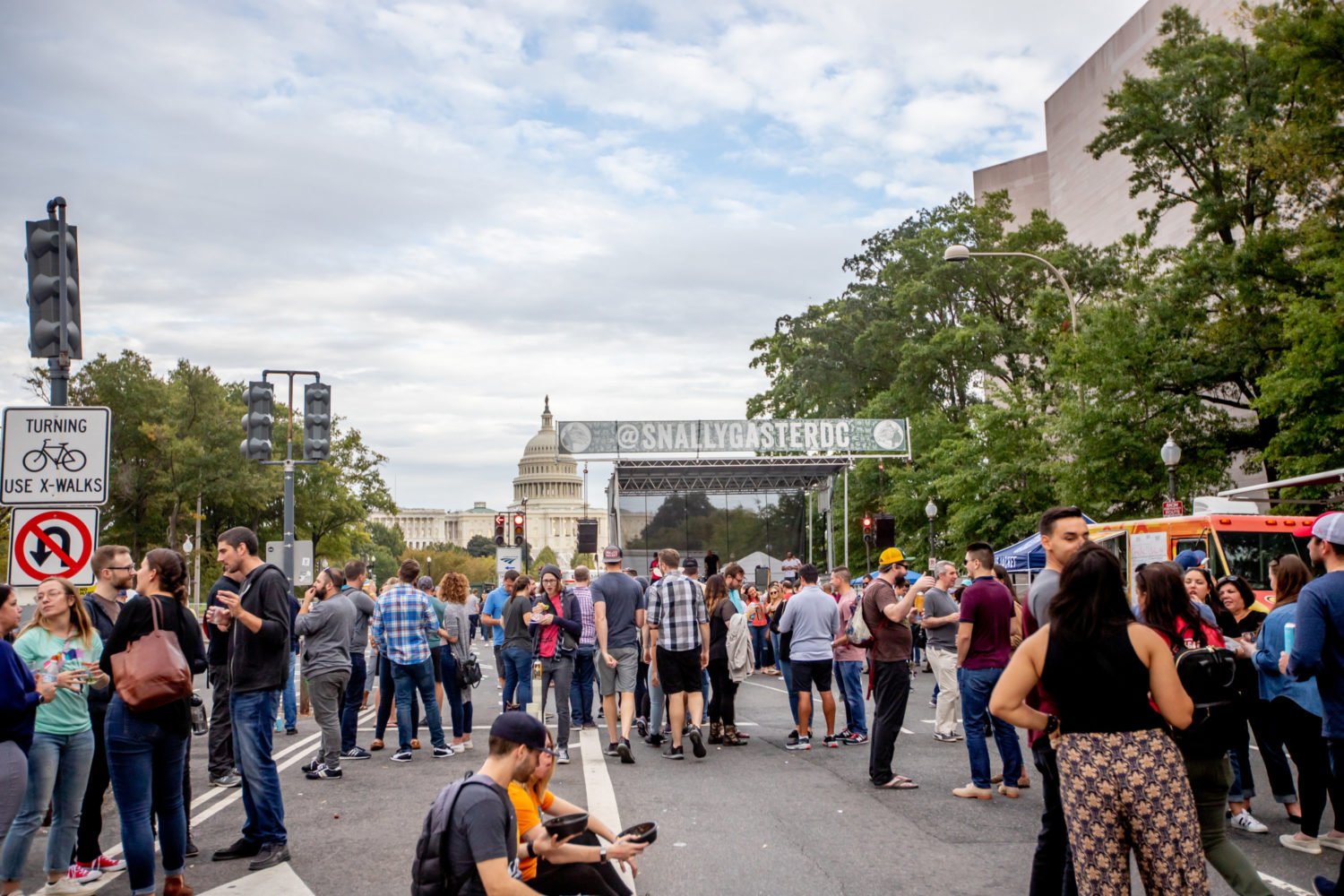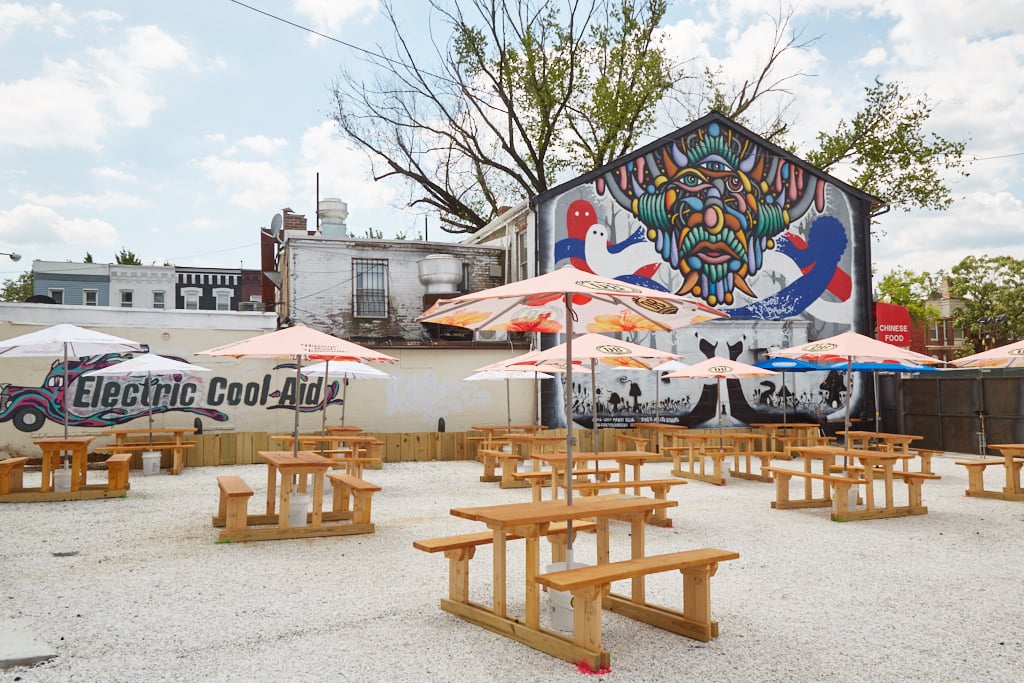I’m standing at the corner of 14th and U streets, Northwest, with a toothbrush and bug spray in my backpack, when Justin Vitarello pulls up in his gray Ford Transit van.
The 15-seater looks relatively sedate compared to the circus-like vehicles Vitarello used to drive as the founder of Fojol Bros., one of DC’s first food trucks. After hitting the streets in 2009, the St. Albans and Brown University grad built up a fleet of three mobile eateries named after made-up lands inspired by real ones: Merlindia (Indian food), Benethiopia (Ethiopian), and Volathai (Thai). The staff of his “traveling culinary carnival” gave themselves goofy names like Dingo and Ababa Du and wore ridiculous costumes.
In that respect, Vitarello hasn’t changed in the two years since I last saw him. He’s decked out in yellow bejeweled sunglasses, a tan flat cap, a coat with bright floral lining, white Crocs, and a pair of bright blue wireless Beats by Dre around his neck.
Inside the van, I’m joined by an eclectic group: some Sierra Leonean musicians, a pow-wow singer, and a health care consultant, among others.
We’re spending the weekend at Vitarello’s real-life land: Cataway Place.
***
Vitarello seemed, from the outside, on top of the game in early 2014. He was a leader in the food truck scene who’d helped push through new mobile vendor regulations after a hard-fought battle with regulators and restaurants. For his next act, Vitarello planned to debut “Elastic Highways“—1950s municipal buses converted into dining cars and multipurpose spaces that would help “activate” different parts of the city.
But before that ever happened, Vitarello closed his trucks, put his buses into hibernation, and disappeared from the public eye.
“I was definitely was really, really depressed. I was so sleep-deprived,” Vitarello says. He’d taken only six days off in the past six years.
Vitarello got a job with a software company and bought a piece of waterfront land abutting Piscataway Park in Maryland, about 20 miles southwest of DC. You can spot George Washington’s Mount Vernon and Fort Belvoir on the opposite side of the Potomac River.
Amid the property’s 13 acres of forest, algae-covered ponds, and creeks, Vitarello started to connect with nature and find peace of mind. Now, he wants to bring other Washingtonians there to do the same. He’s converted his property into Cataway Place—an “offsite for DC” that’s part commune, part business retreat.
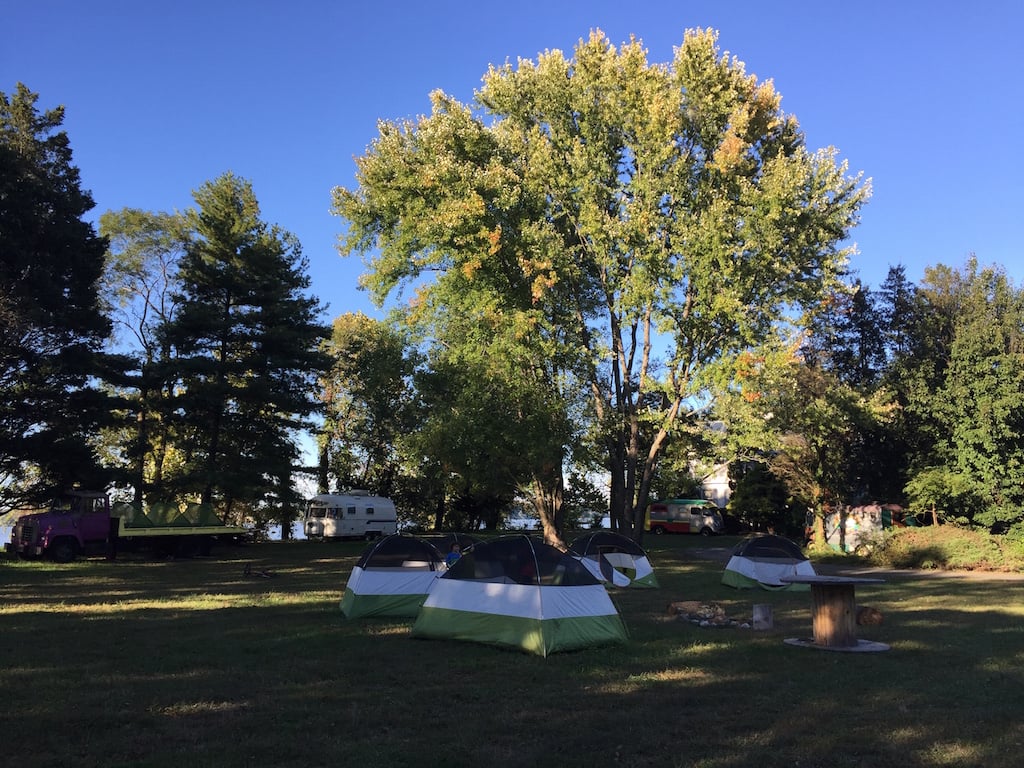
Vitarello wants to attract nonprofits, tech companies, law firms, and other groups looking for space to hold team-building excursions and meetings during the week. But on weekends, the place is devoted to “nomads.” These individuals—artists, musicians, nature lovers, or really anyone—must be referred by a member. (If you don’t know a member, you can write “member me” as a referring member on Cataway’s website and they’ll get in touch. There’s no cost for membership for now; only active participation in the community is required.)
Vitarello shuttles any visitors who need a ride on Saturdays and Sundays at certain pick-up points in DC. In addition to the Ford Transit, he’s got a 1970s San Francisco public transit bus for big groups, and in the future, he wants to boat people from the southwest waterfront.
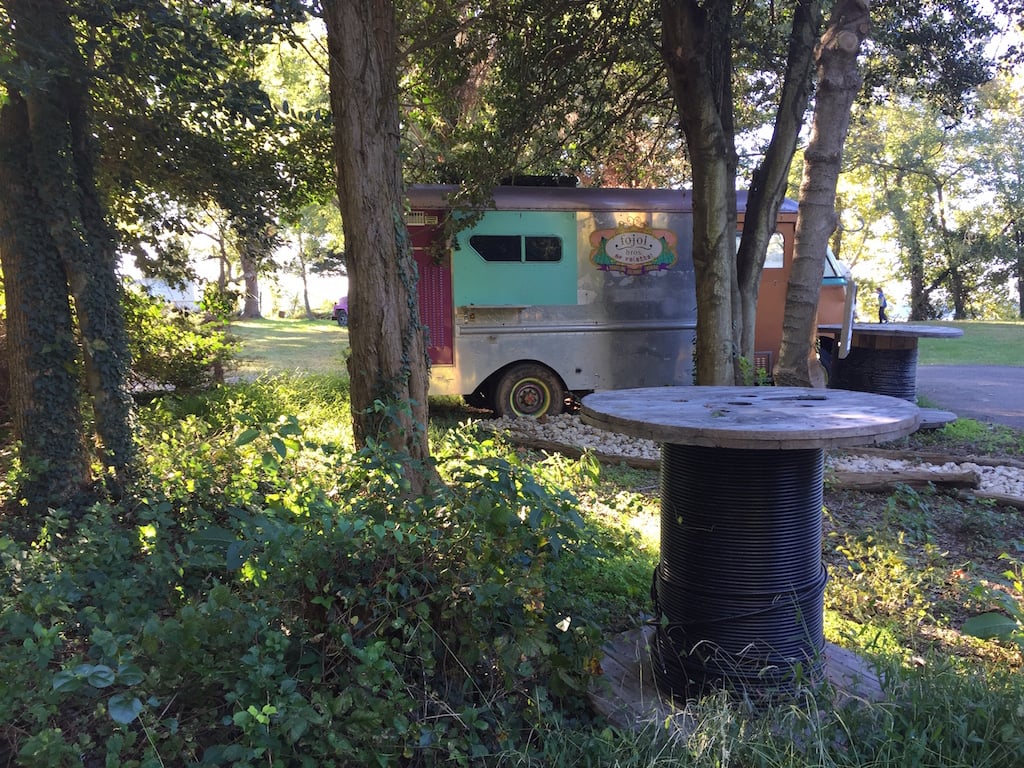
When we arrive at the gates of Cataway, Vitarello asks everyone to turn off their phones. “We want you to separate from that for the sake of getting closer to something else,” he tells the group.
We then head to the “club house”—really just a house—that overlooks the water. Everyone has to take off their shoes at the door.
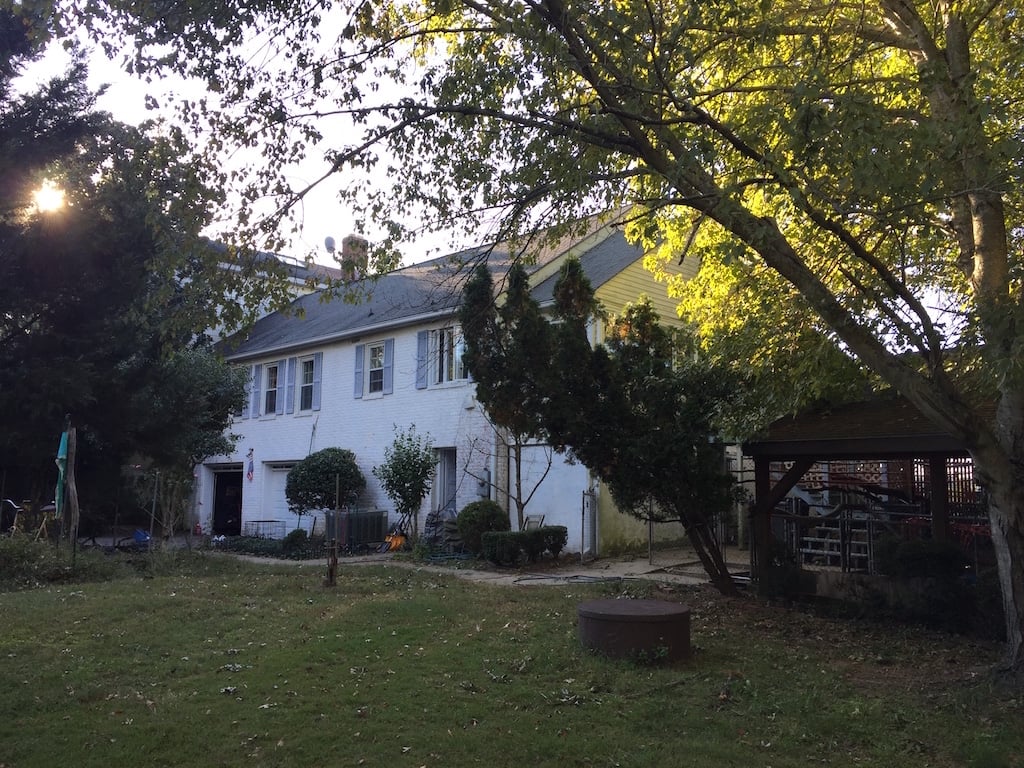
Phone and laptop use isn’t totally banned, but it is limited to “dedicated technology zones” in the upstairs of the house, where closets have been converted into “phone booths” and mini lockers are available to store your devices. There’s also an office with a copy machine, wi-fi, and other supplies as well as a carpeted room filled with colorful fabrics and ottomans for “collaborative, relaxed meetings.” What was once a sauna has been turned into a nap pod.
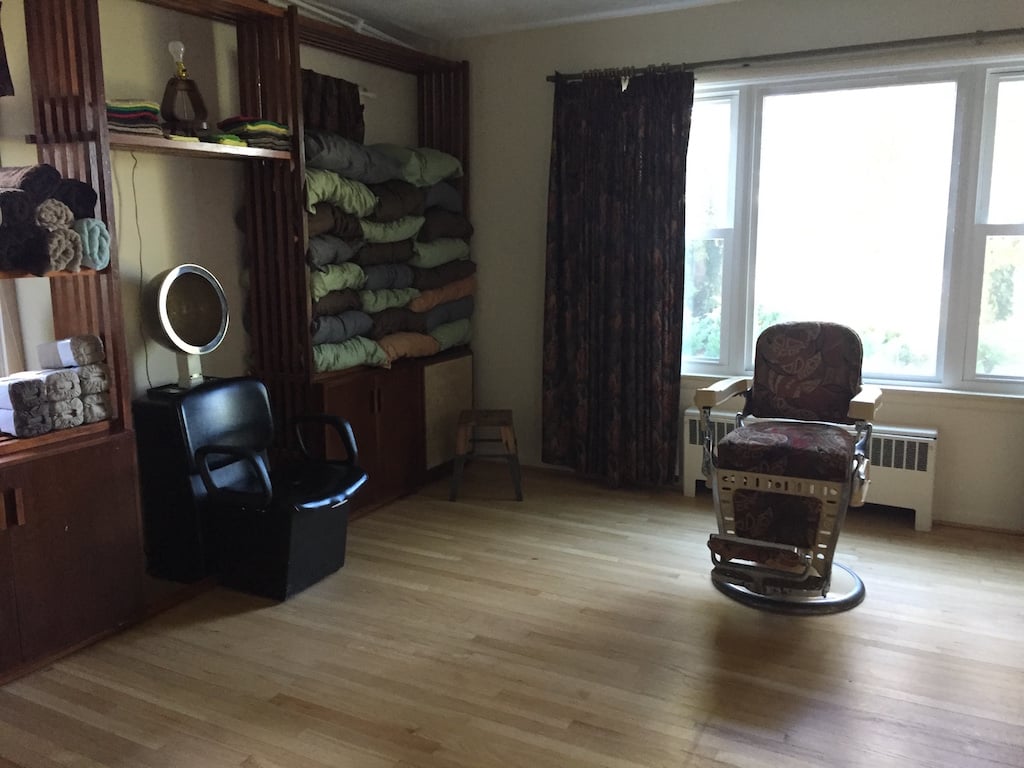
The furniture in the rest of the house consists of a hodgepodge of diner stools, a dentist’s chair, and salon dryer chair, but there are purposely no couches. As Vitarello explains, he wants people at Cataway to be active, not lounging around.
Outside, the grounds are scattered with tents (where I later end up camping for the night) and around 20 vehicles, including Vitarello’s former food trucks and the Elastic Highways.
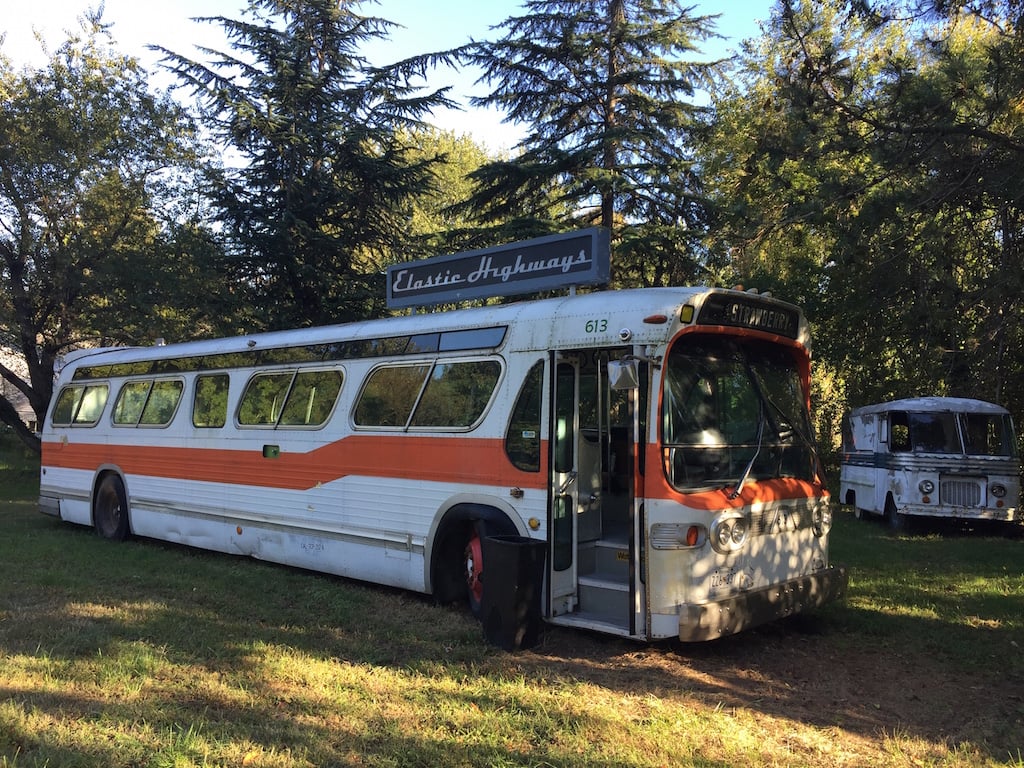
One of the buses—retrofitted with tables, booths, and USB outlets—acts as a cafeteria for our lunch. This particular weekend is themed around “indigenous unity,” and some fellow nomads constructed a Hawaiian earth oven to cook pork, chicken, and yams over coals underground. No alcohol is allowed at Cataway.
There’s no strict itinerary for weekend visitors; people kind of do their own thing. But different weekends have different themes and activities. (The “indigenous unity” weekend also included a ceremony I missed the next day from the Nibi Walkers, a group of Native American women who travel the country blessing prominent waterways.)
Among the other activities: canoeing, acupuncture, meditation, art, music, and yoga. The idea is that members will help contribute to additional programming. Vitarello also wants to build an obstacle course.

Helping run the place are Cataway’s CEO, Sebi Medina-Tayac, a 21-year-old Yale grad and member of the Piscataway Indian Nation, and COO, Pablo Barrera, who’s got degrees from University of Pennsylvania and Harvard and is working on a Ph.D. in art history at Yale.
“This place makes more sense the more you’re here,” Barrera says. Right away, he says he got Vitarello’s vision: “I saw a person who had these big plans that just didn’t quite fit anywhere and was trying to create a space where they would.”

Meanwhile, Medina-Tayac has his own vision to the place. When he found out through a friend or a friend that someone had bought property on native grounds, he cold-called Vitarello to introduce himself and tell him about the history of the area. For him, being a part of Cataway was a chance to live on the land of his ancestors and create a space for his tribe to gather and tell their story.
“I’m the 30th generation of my tribe. That means my uncle can name his father, his father, his father for 30 generations going 900 years back,” Medina-Tayac says. “So this land is definitely very important to us.”
Eight people in total currently work and live (at least part-time) on the property, including Ruben Koroma, a founder of the band Sierra Leone’s Refugee All Stars, and Diana Dimitrova, a former salsa instructor from Bulgaria who oversees the kitchen and makes her own yogurt and kombucha. (Her young daughter lives there too.) For dinner, Dimitrova and Vitarello cook up an appetizer of schnitzel over eggplant and a Korean noodle dish known as japchae.
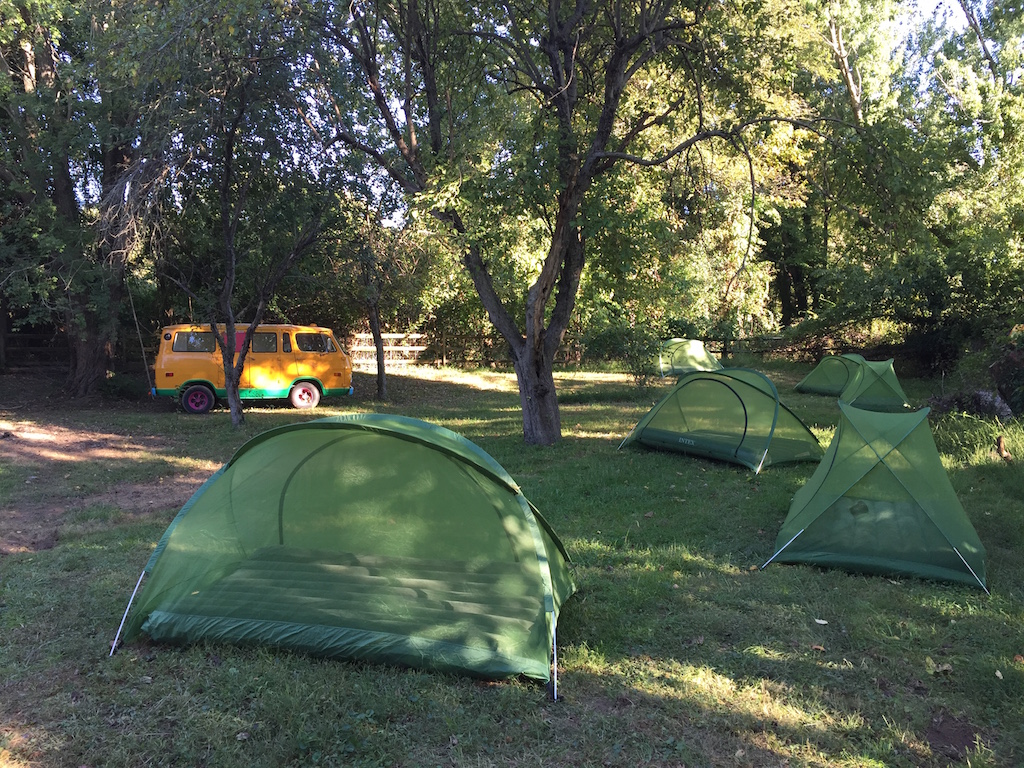
Beyond meals, I spend a lot of my Saturday at Cataway wandering between the menagerie of vehicles. Among them is one food truck that never quite got off the ground: the Rolling Cave of Silence. The idea was that Vitarello would sell lassi pops from the truck without ever saying a word to customers. Instead, he’d write on paper to communicate.
“It’s going to end up being probably someone’s bed tonight,” Vitarello told me en route to Cataway.
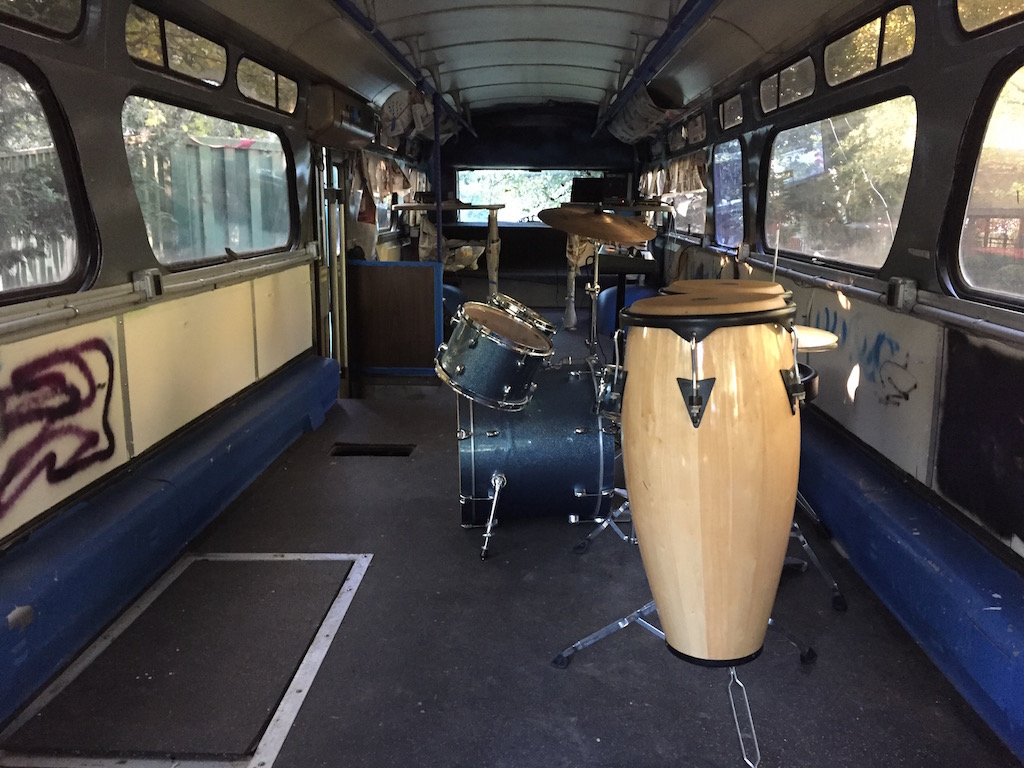
Another popular hangout: an Elastic Highway bus that’s been converted into a music room with drum sets and guitar. Sierra Leonean musicians Janka Nabay (one of Vitarello’s first food truck employees), Koroma of the Refugee All Stars, and two others jam together in the the bus throughout the afternoon. And every Saturday night, they perform their reggae-style music for everyone around a bonfire.
Someone passes around a basket full of tambourines and rattles. We all play along under the full moon. It’s that kind of place.
As the night starts to wrap up, Vitarello takes me in one of his golf carts—they love their golf carts—back to the bus-turned-music room. It’s now illuminated like a nightclub with a rotation of fuchsia, blue, and green lights. Vitarello cranks up some club music and lifts himself up on the handle bars like a jungle gym, then crashes to the floor and does a somersault.
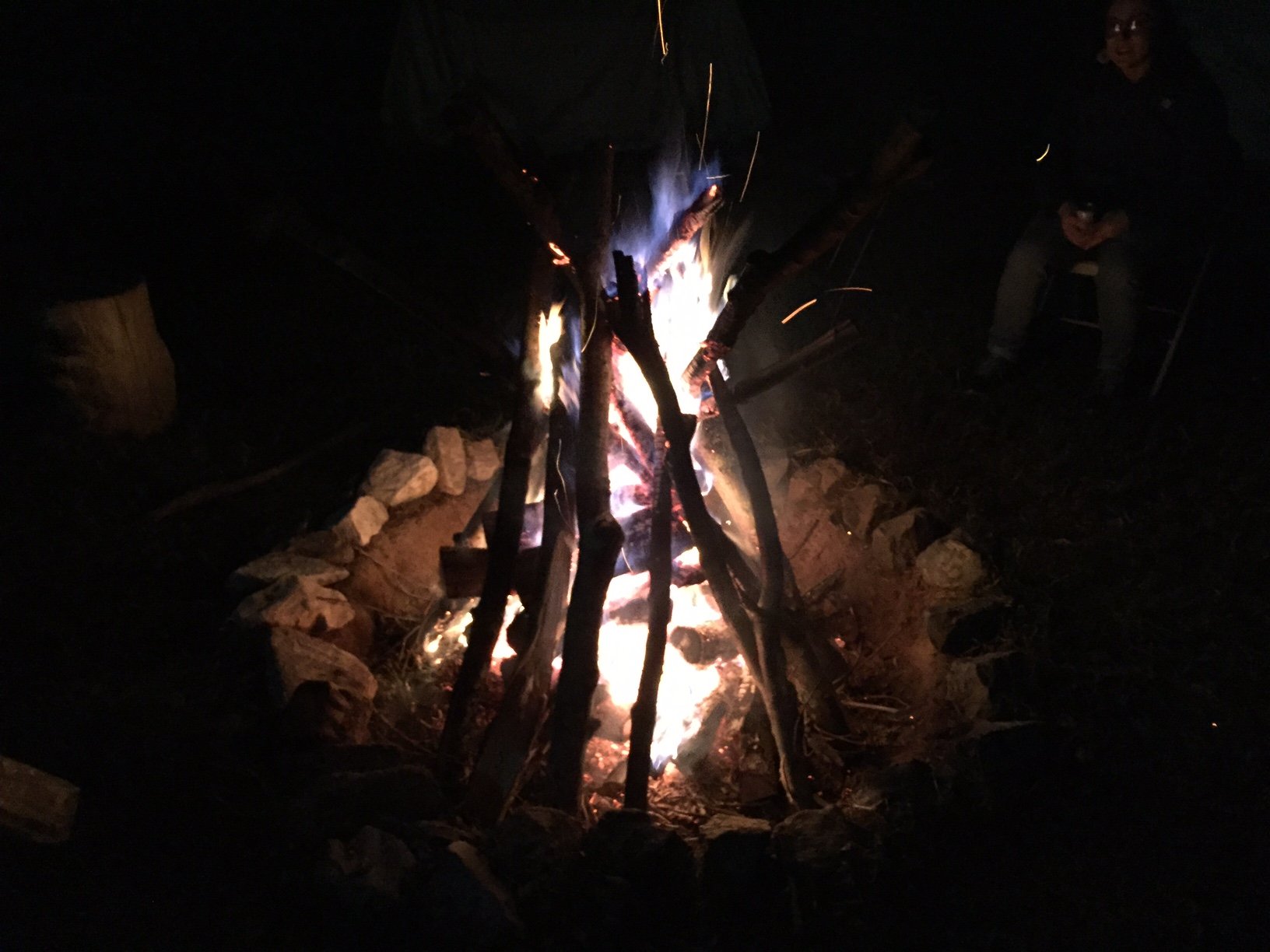
Cataway Place isn’t meant to be an “escape” or “getaway,” Vitarello later tells me. “It’s more going toward something that we naturally know is good for us… I’m going toward something more communal. I’m going toward something that’s more holistic. I’m going toward something that’s more creative.”
Vitarello has never been to Burning Man—the desert festival that’s all about self-expression, “radical” inclusion, and communal effort—but he can see some similarities in philosophy. “Our goal is to intertwine in people’s lives. Burning Man happens once a year and it’s this big event,” he says.
For businesses and other groups that want to visit, Cataway has set rates, depending on the number of people and whether they rent out the property exclusively. “Nomads,” however, set their own price. That might be cash, but it could also be art, food, and work.
If visitors want to give monetarily, they can head to a trailer dubbed the “Check Out” before they leave.
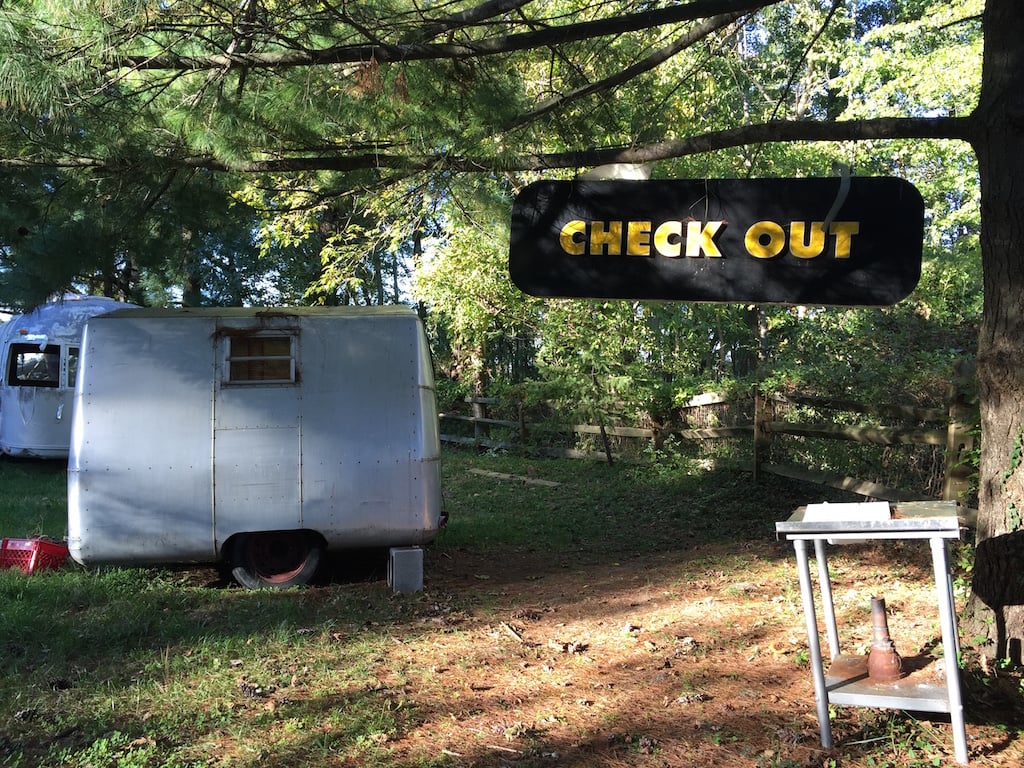
“You’re inside the cash register now,” Vitarello says, stepping inside during our initial tour of the property. The floors have been covered with marble tile, and colorful cloth hangs from the ceiling—like “Tibet and the Vatican collided a little bit.” Straight ahead: an iPad with a credit card reader mounted to the wall like a shrine.
“You walk in here and you say, ‘I’m leaving, I’m going to have a moment of silence… You reflect on your life and you reflect on where you’re going,” Vitarello says. “And you say, ‘This was a $5 experience. This was a $555 experience. Or this was $50, $60, $80… No one has the same price here.”


